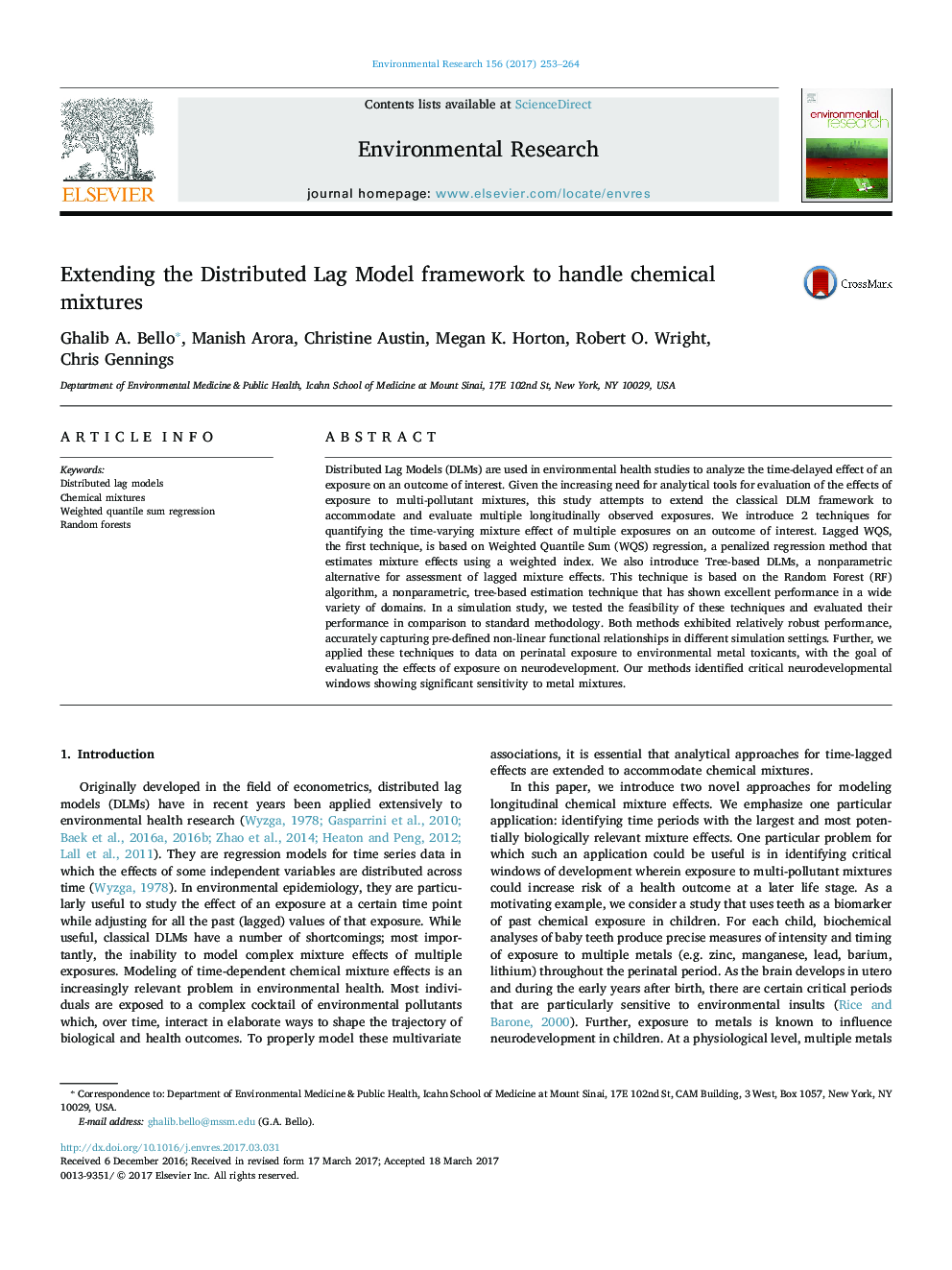| Article ID | Journal | Published Year | Pages | File Type |
|---|---|---|---|---|
| 5756485 | Environmental Research | 2017 | 12 Pages |
Abstract
Distributed Lag Models (DLMs) are used in environmental health studies to analyze the time-delayed effect of an exposure on an outcome of interest. Given the increasing need for analytical tools for evaluation of the effects of exposure to multi-pollutant mixtures, this study attempts to extend the classical DLM framework to accommodate and evaluate multiple longitudinally observed exposures. We introduce 2 techniques for quantifying the time-varying mixture effect of multiple exposures on an outcome of interest. Lagged WQS, the first technique, is based on Weighted Quantile Sum (WQS) regression, a penalized regression method that estimates mixture effects using a weighted index. We also introduce Tree-based DLMs, a nonparametric alternative for assessment of lagged mixture effects. This technique is based on the Random Forest (RF) algorithm, a nonparametric, tree-based estimation technique that has shown excellent performance in a wide variety of domains. In a simulation study, we tested the feasibility of these techniques and evaluated their performance in comparison to standard methodology. Both methods exhibited relatively robust performance, accurately capturing pre-defined non-linear functional relationships in different simulation settings. Further, we applied these techniques to data on perinatal exposure to environmental metal toxicants, with the goal of evaluating the effects of exposure on neurodevelopment. Our methods identified critical neurodevelopmental windows showing significant sensitivity to metal mixtures.
Related Topics
Life Sciences
Environmental Science
Health, Toxicology and Mutagenesis
Authors
Ghalib A. Bello, Manish Arora, Christine Austin, Megan K. Horton, Robert O. Wright, Chris Gennings,
